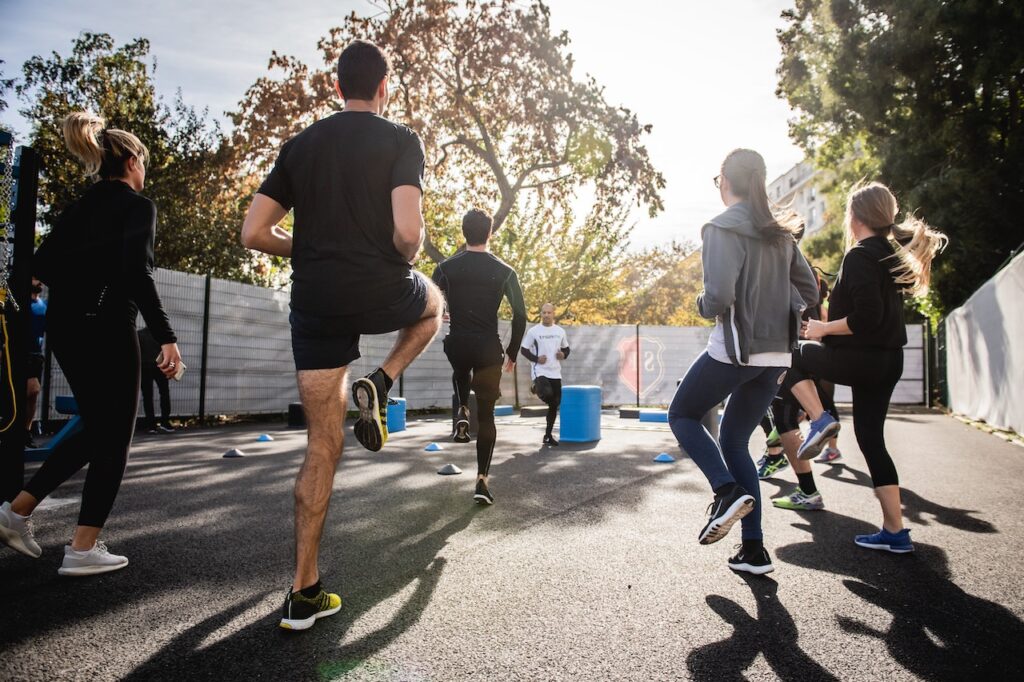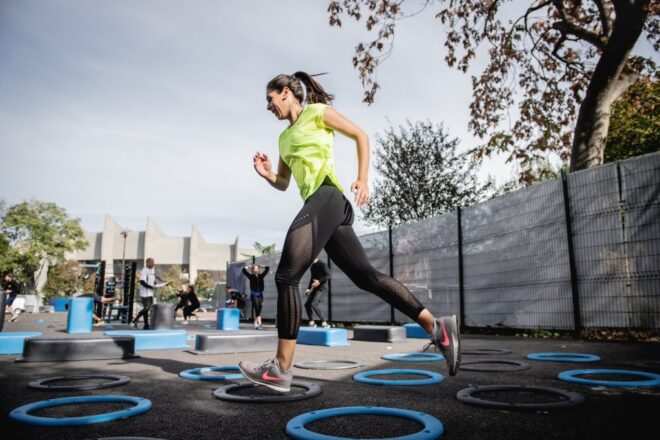I’ll admit – when I first took up running, I was not sure how to run properly, simply winging it on the go. I thought my body would just naturally progress to longer distances and a better pace. But a persistent knee pain was a signal I was ignoring one very important factor – proper running form.
Luckily, reaching out for professional help meant I could prevent further injury and keep doing what I love. Today, to help you progress safely, I want to discuss why proper form matters and share some tips so you can make simple changes that create solid gains.
In This Article
In This Article:
Why Running Form Matters
Mastering proper running form not only means you can run faster or further but more efficiently and safely. A harmonious stride, balanced posture, and synchronized breathing play important roles in maximizing energy output and minimizing wear and tear of the joints.
When we run with correct form, our bodies distribute impact evenly, shielding vital joints and muscles from stress. Conversely, poor running form can lead to muscle imbalances, overstraining, and a heightened risk of injuries.
By honing your running technique, you will not only optimize your performance but also safeguard your body’s well-being for the miles ahead.
How to Evaluate Your Current Running Form
Firstly, listen to your body. If specific areas consistently ache or feel strained during or after a run, it’s likely an indicator of improper technique. For instance, recurring knee pain might stem from a harsh heel-first landing.
Secondly, leverage video analysis. Recording yourself can reveal aspects of your stride or posture you’re unaware of. Watching your form in slow motion and comparing it to expert tutorials can pinpoint discrepancies.
Lastly, get help from a running coach. Their trained eyes can detect subtle inefficiencies and spot common mistakes, providing immediate feedback to achieve a good running form. Proper evaluation is the first step toward optimized, pain-free running.

How to Run Properly
Whether you are taking up running to lose weight, get fit, or a mixture of both, utilizing these 9 running tips to achieve proper running form will be priceless for your journey.
1. Look ahead
When running, your line of sight can significantly impact your posture and efficiency. Instead of looking down, always keep your gaze forward, focusing on the path ahead.
By keeping your chin slightly down, you align your neck with your spine, promoting a more ergonomic form. This simple adjustment can make all the difference in your running technique.
2. Straighten your back
Check your posture while you are running. Make sure your shoulders are relaxed, your shoulder blades are back and down, your torso is strong and upright, and you lean forward slightly.
Proper posture will ensure that you can maximize your oxygen uptake, which will prolong your endurance performance. Vice versa, slouching or having bad posture might limit your air intake and hurt your performance.
3. Swing your arms
While running, swing your arms in a forward, straight motion so they don’t go across your chest. Ideally, each arm swing should be more or less symmetrical, with a 90-degree angle at your elbows, keeping your hands relaxed.
Remember to rotate your arms from your shoulder while keeping your elbows locked in place, not the other way around.
4. Relax your hands
The positioning of your hands can influence your running rhythm and energy expenditure. Aim to keep your wrists at waist level, ensuring your arms swing naturally alongside your body.
Equally important is to maintain relaxed hands. Instead of clenching them into tight fists, let them be loose, almost as if you’re lightly holding an egg. This relaxed grip reduces unnecessary tension and allows for a more fluid stride.
5. Engage your core
When you first begin running, you might feel soreness in your core muscles. This is because they work hard to maintain good posture and stabilize your upper body.
Core strength ensures better posture, which optimizes oxygen intake during your runs. Moreover, runners with a strong core tend to have fewer overuse injuries, and if injuries do occur, their recovery is often faster.
While running, keep your core tight and engage your glutes to enhance your stride and make your runs more efficient.
6. Bend your knees
While running, maintaining efficient lower body movement, especially in the knees, is essential. This means keeping your knees slightly bent and lifting your legs only as high as necessary, ensuring energy isn’t wasted on exaggerated motions.
Additionally, remember to hinge at the hips. This posture allows for smoother strides, promoting better overall running mechanics.
7. Step lightly
The way your foot lands with each stride can greatly impact your run. Stepping lightly while running improves your running economy, reduces the impact on your joints, and decreases muscle fatigue.
To step lightly, aim for a mid-foot strike rather than leading with your heel. Reducing your stride length will help you step lighter. Also, remember to keep your run smooth and avoid bouncing.
Learning how to step while running may feel awkward at first, but you’ll quickly adjust.
8. Don’t overstride
Shorter strides while running can promote your long-term running health and prevent common running injuries. It will help increase your cadence naturally, improve stability, and help protect your joints from overstraining.
Opt for shorter strides and maintain proper leg positioning to prevent overstriding. To do so, keep your legs directly underneath you, ensuring your feet don’t reach out too far in front.
9. Breathe deeply
Short, shallow breaths may harm your performance by limiting your oxygen intake. It can also increase the risk of cramps while running. That’s why it’s important to learn how to breathe while running when you first start.
Ensure that you breathe deeply while running. Most coaches agree that breathing in through your nose and out through your mouth is the most efficient technique.
Nose-breathing activates the parasympathetic nervous system, which enhances recovery. It replenishes oxygen during your run, making it vital for success.

FAQs
How do I know if I’m running correctly?
Listening to your body is important. If specific areas consistently ache or feel strained during or after a run, it may indicate improper technique. For example, recurring knee pain could be due to a harsh heel-first landing.
Also, video analysis is an excellent tool. Recording yourself can help identify areas of your stride or posture that need improvement.
If you’re uncertain about your running form, seek feedback from a physical therapist or certified coach who can provide expert guidance and tailored recommendations.
How should my foot land when running?
For optimal running form, it’s recommended to land mid-foot instead of heel-strike. This approach improves your running efficiency, decreases muscle fatigue, and minimizes the impact on your joints.
Reducing your stride helps achieve a lighter step. Keep runs smooth and avoid bouncing. While initially, it may feel odd, with practice, this technique becomes natural.
What is the correct way to run?
While there isn’t a one-size-fits-all approach, adhering to certain practices can improve your current running style and help you stay injury free.
A correct running form involves a harmonious stride, balanced posture, and synchronized breathing. This ensures efficient energy output and minimizes wear and tear on the joints. It distributes impact evenly, protecting muscles and joints from undue stress.
By refining your running technique, you not only boost your performance but also enhance your body’s long-term well-being.
How high should I lift my knees when running?
Efficient leg movement is key to achieving proper running form and helping prevent injuries. While running, try to keep your knees slightly bent and lift your legs only as high as necessary to prevent wasting energy on unnecessary motions.
Overlifting can cause excessive energy expenditure and potential strain of leg muscles. It’s also essential to hinge at the hips for smoother strides, which promotes better overall running mechanics.
Takeaways
Starting the journey to become a runner means mastering the proper running form – key to sustainable running. By distributing the impact evenly, it safeguards muscles and joints from stress and significantly boosts running performance.
To become a more efficient runner, keep these pointers in mind:
- Posture and gaze: Keep your gaze forward and back straight for optimal alignment.
- Footwork: Aim for a mid-foot strike, land softly, and avoid overstriding.
- Arm movement: Swing arms forward and maintain a 90-degree angle at the elbows.
- Core engagement: A strong core enhances stride and helps avoid injury.
- Breathing: Deep, rhythmic breathing ensures ample oxygen intake, aiding in endurance and recovery.
Running apps like Joggo can help you incorporate these insights into your runs, paving the way to a safer, more efficient, and enjoyable running experience. Take our quiz and discover:
- Personalized running plan according to your goals, needs, and lifestyle.
- Educational articles and expert tips to get you ahead of the game.
- Personalized meal plan created around the foods you love.
References:
- Lawrence, P. and Burgess, J., Proper Running Form Point System.
- Lawrence, P.J., Gulgin Ph D, H. and Burgess, J., 2012. Effect of Adopting Proper Running Form Techniques on Hip Strength in Healthy Females.
- Zhang, X., Huang, M.C., Ren, F., Xu, W., Guan, N. and Yi, W., 2013, September. Proper running posture guide: a wearable biomechanics capture system. In Proceedings of the 8th International Conference on Body Area Networks (pp. 83-89).
- Protheroe, C.L., De Souza, A.M., Harris, K.C., Claydon, V.E. and Sanatani, S., 2018. Running: How is it Taught and Evaluated in British Columbia Schools?. UBC Medical Journal, 9(2), pp.16-19.
- Davis, S., 2016. Running Atlas: A Literature Review of Running Form and Technique, The. Honors Theses AY 15/16.
- Anderson, O., 2019. Running form: How to run faster and prevent injury. Human Kinetics.














